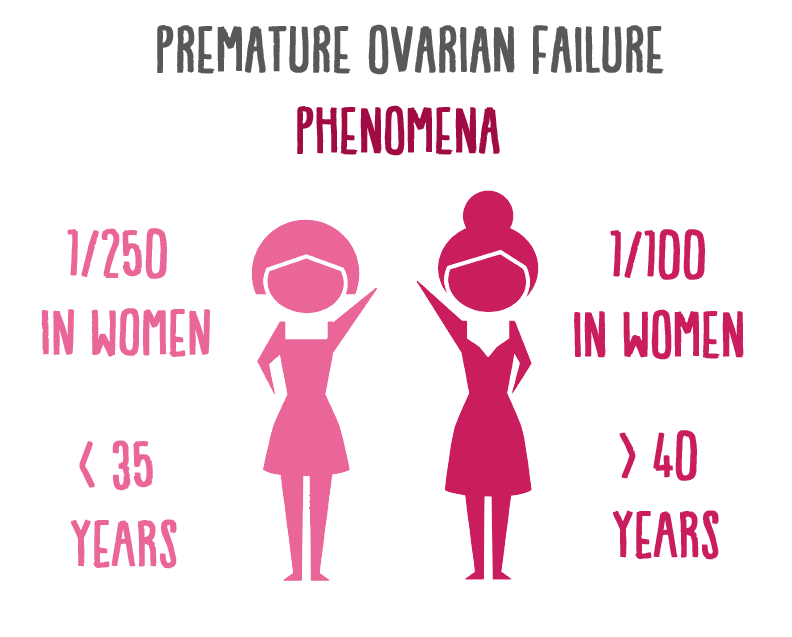Premature Ovarian Failure Overview
A common gynecological endocrine disease
Premature ovarian failure is a common gynecological endocrine disease characterized by the loss of ovarian function in women below 40 years.
Also called primary ovarian insufficiency or early menopause, most often premature ovarian failure (POF) is a non-reversible pathology leading to infertility.
Normally, ovaries produce hormones and eggs until the early fifties, when they stop working and most women enter menopause. However, phenomena such as the dysfunction and the depletion of follicles (the cellular aggregates in the ovaries secreting hormones that influence the menstrual cycle) lead to POF, whose prevalence is 1/250 in women under 35 years and 1/100 in women under 40 years; the consequent loss of ovarian reserve (the number of follicles remaining in a woman’s ovaries) increases the risk of infertility, severely affecting women both physically and mentally.
In fact, premature ovarian failure diagnosis often comes unexpected, leaving women emotionally overwhelmed. Their self-esteem can be reduced, while anxiety, shyness, and symptoms of depression are around the corner.

The trend in women suffering from POF
Premature ovarian failure is the cause of 10-28% of cases of primary amenorrhea (lack of menses by the age of 16 years) and 4-18% of cases of secondary amenorrhea (menses interruption lasting at least 6 months). The trend in women suffering from this condition is increasing due to the effects of multiple factors, among which the wide use of chemotherapy plays a significant role.
Based on its mode of action, this condition can be classified as either spontaneous or consequent to an insult, such as chemotherapy or surgery. Often, the former type of premature ovarian failure is not easy to identify; that is why delay in diagnosis is common. In contrast, the latter is almost always anticipated, and interventions against hormones deficiency symptoms and long-term consequences can be initiated prior to the POF-promoting insult.

